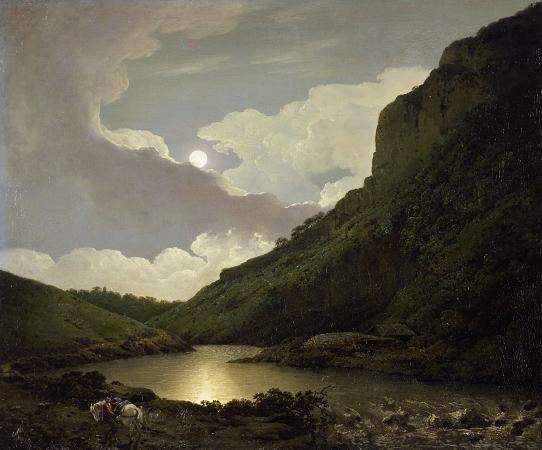Matlock. Matlock is the county town of Derbyshire, England. It is situated in the south-eastern part of the Peak District, with the National Park directly to the west. The town is twinned with the French town of Eaubonne. The former spa resort of Matlock Bath lies immediately south of the town on the A6. The civil parish of Matlock Town had a population in the 2011 UK census of 9,543. The population of the wider Matlock urban area is approximately 20,000. Matlock is nine miles south-west of Chesterfield and in easy reach of the cities of Derby, Sheffield and Nottingham; the Greater Manchester conurbation is 30 miles away. Matlock is within the Derbyshire Dales district, which also includes the towns of Bakewell and Ashbourne, as well as Wirksworth. The headquarters of Derbyshire County Council are in the town. In the Domesday Book of 1086 it was recorded as Meslach and in 1196 it was named Matlac. It is a former spa town that lies on the River Derwent, and has prospered from both the hydrotherapy industry and the cloth mills constructed on the river and its tributary Bentley Brook. It was a collection of villages in Wirksworth Hundred, composed of Matlock Town, Matlock Green, Matlock Bridge, Matlock Bank-until thermal springs were discovered in 1698. The population increased rapidly in the 1800s, largely because of the popular hydros that were being built. At one stage there were around twenty hydros, mostly on Matlock Bank, the largest built in 1853 by John Smedley. This closed in 1955, and re-opened in 1956 as the headquarters of the Derbyshire County Council. Matlock is also home to the Derbyshire Dales District Council as well as Matlock Town council. Matlock has a town council, the urban equivent of a rural parish council and the lowest tier of local government. The Council meets twice a month. There are 11 Councillors who cover the area and 9 members of staff.Matlock Town Council's jurisdiction extends to the town centre, Matlock Bank, Hurst Farm, Matlock Green, Matlock Town, Starkholmes and Riber. The second tier of local government is Derbyshire Dales District Council, which covers almost a third of the mainly rural parts of the county, including the towns of Matlock, Ashbourne, Bakewell, Wirksworth and Darley Dale and over 100 villages. The council has 39 District Councillors elected in 25 wards. Matlock is represented by 6 councillors in the two wards Matlock All Saints and Matlock St Giles. The top tier of local government is Derbyshire County Council, which has responsibilities for the whole of Derbyshire apart from the City of Derby. Matlock is represented by one county councillor. The main offices of all three tiers of local government are sited in Matlock. The Town Council is situated in the Imperial Rooms close to the bottom of Bank Road, the District Council is halfway up Bank Road and the County Council is at the top. As regards national democracy, Matlock forms part of the parliamentary constituency of Derbyshire Dales. The MP is currently Sarah Dines, who was elected in the 2019 General Election. The main physical features of the Matlock area are the hills and watercourses. The height of the town varies from 91m at Causeway Lane to 203m at the top of Wellington Street. Matlock is overlooked by Riber Castle at 260m from the south-east and by Masson Hill at 339m from the south-west. The first human settlement in the area was in what is now known as Old Matlock or Matlock Green. This was where the Bentley Brook joined the River Derwent. When the town grew in the late 19th century, the town spread up the steep hillsides to the north-east of the narrow valley bottom. Various industries made use of the natural features: The underlying bedrocks were quarried and mined. The watercourses were harnessed to power corn, cloth and other mills. The hillside thermal spring water gave rise to the hydros. The natural features also constrained transport links: In the Derwent gorge below High Tor, the present-day A6 was squeezed in beside the river. From the south, the Midland Railway reached Matlock Station via a series of short tunnels constructed under the limestone of the gorge. A cable tramway was constructed to tackle the very steep Bank Road. The geology of the Matlock area is extremely complex. Broadly speaking, the Derwent valley bottom forms a boundary between the sandstones and gritstones of the Dark Peak to the NE and the limestones of the White Peak to the south-west.
more...



